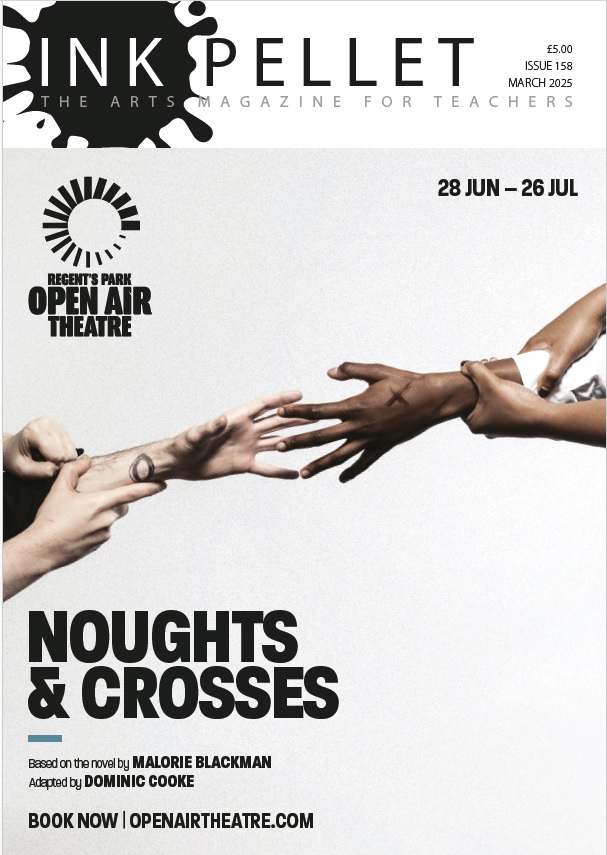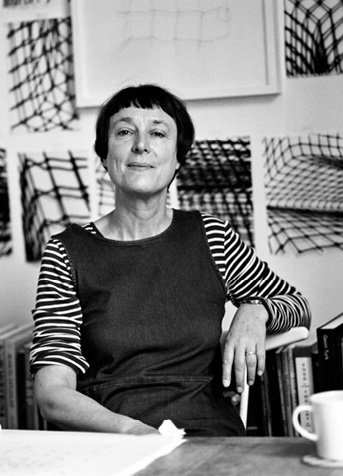Blown away by the Cornelia Parker exhibition at Tate Britain, Graham Hooper implores you not to miss this event.
I’m going to begin by saying that I think Cornelia Parker, whose work is surveyed at Tate Britain in London until October this year, is, in my opinion, the nation’s greatest living artist. That’s a big thing to say, but if the work I saw is anything to go by I am confident in making that statement.
As I walked around the displays – looking, thinking, listening, watching – I found myself looking for errors or shortcomings and not only found none, but only discovered really clever, profoundly fascinating, humorous, inventive and challenging art.
Tate Britain doesn’t describe her as a sculptor, film-maker or print-maker, or even an artist actually. The exhibition guide describes her as ‘widely celebrated’ and she is well known, but not like David Hockney is. I’m struggling to think of another living British artist who quite compares. Gillian Wearing has worked across a variety of forms, but tends to explore singular themes around identity, broadly speaking. However, Parker not only questions our thinking across a wide range of ideas, but does so using an equally diverse set of forms. The guide again refers to her transforming ‘everyday objects’, and certainly transformation (of objects, but also of conventional thinking and traditional perspectives) is key here, but not all her objects are every day. In fact, I was struck by the way she’d use familiar processes or materials – methods of change that we might use daily and physical items that we access regularly – but in emphatically unexpected ways. Most weeks I burn food (inadvertently I might add, and much to the disappointment of children), squash things (again food, and usually just garlic cloves) and turn things inside-out (socks mainly, when I’m folding laundry). I’ve never, as far as I’m aware, created an explosion or shot a gun (well, maybe at a fairground?). Parker uses these ways of changing things in quietly dramatic ways.
A colliery band’s worth of wind instruments are flattened by a steam roller and hung, in a circle like a Salvation Army, and lit from inside, casting shadows onto the walls. As we walk around our shadows join those of the ornate silver shapes. And there is silence.
One thing I want to note is she has written all the captions herself, and they are so elegant and honest, so clear and simple really, in clarifying what she sees as the visual metaphor. The wind has been taken out of these trumpets and tubas, but we remember all those mouths, every lung, each breath that once breathed life into these systems of valves and tubes. This work is called “Perpetual Canon”, a musical term that references a continually repeated phrase. There’s the light (and heavy and dark), the air and space, or lack of it, the band (as in ring and group, of musical players), on and on, every association, every connotation adds another layer of wisdom and tragedy. And this is just one room.
Throughout the show Cornelia Parker has clearly spent hours organising and arranging, again physically and mentally. She harnessed the support of the British Army, in her most infamous work, to blow up a garden shed, and then gather together the pieces, and again suspending them from the ceiling with a central bright light. “Cold Dark Matter: An Exploded View” looks like the birth of a universe. The Semtex brings to mind the explosive of choice for terrorists, violent and deadly, but the idea of her pressing the plunger also suggests a cartoon-like ACME TNT dynamite blast. Two very different sets of scenarios that are brought together simultaneously to create a third kind of event, that is a beginning and an end, an implosion, but then this detonation has been frozen in time. Cold Dark Matter is everything in the universe that we know is there, that we understand must be there, but yet can’t be seen or measured in any way. An Exploded View is a phrase used in engineering diagrams that shows the constituent parts of a machine, to help appreciate and visualise the workings and internal relationships. Is the universe a machine? Newton considered it so, and used it as a convenient metaphor to help us understand complexity in more manageable ways. Then Einstein blew up our notion of a clockwork solar system, where time could be stretched and expanded.
Much of the power of this frankly extraordinary show comes from the careful placement of the various scenes. The exploded shed takes up an entire room, likewise “Perpetual Canon” described earlier. The same is true of “Thirty Pieces of Silver” (flattened silverware). “The Title is borrowed from the Bible”, she says, in the notes. Of course!, and from that we have all the associations of betrayal, value, death and… thirty prices of silver(ware): forks, spoons, knives.
The metaphors are relatively free and loose… so the various works on show are suggestive of things we might all bring to mind, but also allow for our own personal reflections. If you have a garden shed, or play a brass instrument, you might well have other, even richer attachments and resonances.
I think the scale of these pieces is essential. These things are real, not fabricated. A fork is a real fork, just like the one we might have at home in a kitchen drawer. It hasn’t been moulded. They’ve been found with painstaking searches in car boot sales and charity shops. Each item has previous owners, all of them will be steeped in their own individual histories.
I don’t want to list off every room, even though I can quite imagine that knowing exactly what you’d be seeing would only add to the intrigue and desire to see these things for yourself. A Colt 45 handgun in the earliest stage of construction is a very eery sight indeed. Birth and death in the same object. Looking at that clearly gun-shaped metal form after news of another mass shooting in America, (as I write), is shocking and distressing because it feels so close and real.
There are a few guns. A sawn off, sawn up shot gun. Dice have been shot into a dictionary (and stopped on the page that defines lifeboats), as luck would have it, again literally and metaphorically. What does that speak to us about? Lifeboats. Luck. Death. Definitions.
Cornelia Parker’s work is very political. Everywhere there are ‘issues’ being explored and reflected upon. Her films especially. But it’s still subtle I think, and left for us to ponder on. “American Gothic” (2016) has revellers leaving a Halloween party late at night. Some of the party goers are dressed up as characters from The Wizard of Oz (all the symbolism that film projects), all of them are shot in slow motion. It’s American. It’s Gothic. Is anyone not aware of the painting of the same name, featuring the sinister couple outside the Depression-era home, pitchfork on hand, evil, tragic stares? Parker’s film comes just before Trump’s election.
Closer to home, from 2017, Parker was able to film inside the House of Commons, again at night, with a drone. She has collected together the previous year’s newspapers (left and right leaning). We hear the rotors hum. We see the spotlights scan across the green benches. Then the newspapers begin to ruffle from the down draft of the drone blades. Within minutes the place is awash with yesterday’s news. Surveillance. Light. News. Air. It’s very simple really. Complicated to organise of course, but a straightforward idea really.
Other pieces here (the embroidered recreation of the Magna Carta by individuals as diverse and significant as Edward Snowden and Jarvis Cocker) are equally affecting. I wished my children were here, my students, every student and pupil, from every school and college. But it would need time. Time to explain and unpick the strands of meaning.
Parker is a conceptual artist. It’s the ideas in this show that create the impact ultimately, but there is no denying the force of the visual here. Light and shadow, colour, line, scale and surface. All these very familiar and core elements play their part, and in equal measure.
If you’re reading this, please go to this exhibition. Take your family. Encourage your friends to go. Whatever your beliefs or political persuasions. Tell colleagues. If you’ve never been to an art gallery before, please see these things.
I’ve just enough space left to discuss Tate Britain a little more. No one seems to go there anymore. Ever since its ‘Modern’ sister took centre stage up the river. But this place is a goldmine. I spent the entire afternoon looking at some of the finest portrait painting I’ve ever seen by John Singer-Sargent. Strangely too, but lucky for me, Rothko’s Seagram Murals are now on show at Tate’s Pimlico location. There are two whole rooms dedicated to Henry Moore. Sculptures, drawings, films. Honestly, if I never see any more art ever, I’ve have seen enough. But I’m keeping you from booking your visit. What are you waiting for?



